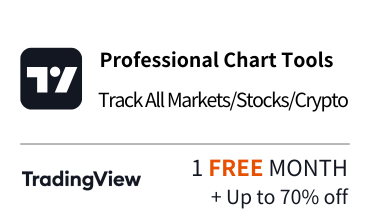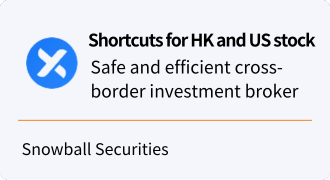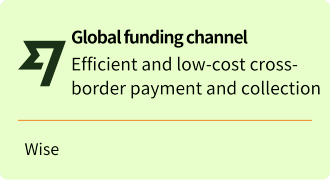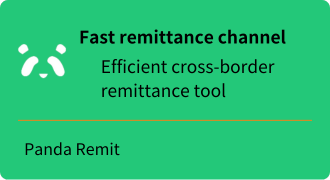Winning U.S. Stock Investing: A Guide to the Five Major Order Types
[DISCLAIMER] This article is for educational and informational purposes only and does not constitute investment advice. Readers should consult with qualified financial professionals before making any investment decisions.
In my quantitative trading work, I often come across many investors who are confused about the types of orders to trade in U.S. stocks. At the same time, as a financial self-trader, I understand the importance of spreading this knowledge. Today, let's dive into the five main order types for U.S. stocks and clear the way for your investing journey.
Imagine holding a precision Swiss Army knife in your hand, with each tool customized for a specific scenario. The five common order types for U.S. stocks are the tools you need to survive in the jungle that is the financial markets. Master them and you'll be able to navigate through different market environments. Let's begin this in-depth journey of discovery!
Ⅰ. Market Order
The double-edged sword of speed and risk
In my quantitative strategies, market orders are often used in scenarios that require fast execution. It's like shouting “Sold” at an auction. It's simple, but carries risks that can't be ignored.
Pros:
- Fast execution, almost guaranteed to close immediately
- Ideal for time sensitive trading strategies
- Ability to move in and out of positions quickly in liquid markets
Disadvantages:
- Transaction prices can deviate significantly from expectations, especially in volatile markets
- Can lead to high slippage and increased trading costs
- More risky in illiquid markets
Case Study:
In one of my high-frequency trades, I placed a market buy order on Tesla (TSLA) stock. The displayed price was $700, but when the order was executed, the price suddenly jumped to $710, and the order was executed even though it was higher than expected. This is the nature of a market order - it guarantees a fill, but not a price.
When to use it:
When you need to get in and out of the market quickly and are trading a large blue chip stock like Apple (AAPL) or Amazon (AMZN), market orders are a great option. But remember, speed comes at a price.
Ⅱ. Limit Order (Limit Order)
The Gatekeeper of Precision Control
Limit orders are one of the most commonly used types in my automated trading system. It's like setting a price alert that allows you to specify a maximum bid price or a minimum ask price.
Pros:
- Precise control of the trade price to avoid accidental high buys or low sells
- Can be executed automatically when the price reaches the desired level, eliminating the need for real-time monitoring
- Ideal for patient investors and price sensitive trading strategies
Disadvantages:
- May result in orders not being executed and missed trading opportunities
- In fast-moving markets, frequent order price adjustments may be required
- Risk of partial execution: large orders may only be partially executed
Case Study:
In one of my mean reversion strategies, I often use limit orders. For example, when I find that the stock price of Microsoft (MSFT) has deviated from its mean, I set a limit buy order at a price slightly below the current market price. If the stock drops back down to the price I set, the order is automatically executed, helping me catch the ideal entry point.
When to use it:
When you have a clear expectation of the price you want to trade at and are willing to wait for a better price, a limit order is the way to go. It's especially good for volatile stocks or for trading during the opening and closing hours.
Ⅲ. Stop Loss Order (SLO)
An umbrella for automatic stop loss
Stop Loss Orders play a key role in my risk management strategy. It's like an airbag for your investment, automatically turning into a market order when the stock price reaches the specified stop loss price.
Pros:
- Automatically limits losses and is an effective risk management tool
- Can help investors to follow trading discipline and avoid emotional decisions
- Ideal for investors who cannot monitor the market in real time
Disadvantages:
May be triggered during rapid price movements, leading to unnecessary selling
Not guaranteed to be filled at the stop loss price, especially if the price jumps short
May miss out on rebound opportunities after short-term pullbacks
Case Study:
In one of my trend-following strategies, I held shares of Netflix (NFLX) with a buy price of $500. in order to control the risk, I set a stop-loss order at $450. when Netflix's stock price fell rapidly due to a weaker-than-expected earnings report, my stop-loss order was triggered, helping me to stop the loss in time and avoiding a bigger loss.
When to use it:
A stop-loss order is an indispensable tool when you want to protect existing profits or limit potential losses. It's especially good for long-term holdings or when you can't monitor the market in real time.
Ⅳ. Take Profit Order
Great for automatic profit taking
In some of my short-term trading strategies, a take profit order is an effective tool for locking in profits. It's like putting a lock on your profits by automatically selling when the stock price reaches a specified target price.
Pros:
- Automatically locks in profits to avoid missing out on profit opportunities due to greed
- Allows you to exit automatically when your investment target is reached, eliminating the need for real-time monitoring
- Helps to achieve pre-determined investment goals
Disadvantages:
- May exit an uptrend too early and miss out on more potential gains
- May lead to frequent entries and exits in fast-rising markets, increasing transaction costs
- Not suitable for long-term value investing strategies
Case Study:
In one of my swing trades, I bought shares of PayPal (PYPL) for $150 and set a take-profit order at $180. when PayPal's stock price rose quickly to $180, fueled by good earnings reports, my shares were automatically sold, locking in a 20% profit for me. Although the stock price then continued to rise, this take-profit order helped me achieve my intended profit goal.
When to use it:
A Take Profit order is ideal when you have a clear profit target and want to take an automatic profit when you reach it. It's especially good for short-term trades or volatile stocks.
Ⅴ. Trailing Stop Order (TSO)
A master of dynamic risk management
The trailing stop order is one of my favorite tools in some of my medium to long-term position strategies. It's like having a smart bodyguard for your investments, automatically adjusting the stop price as the stock price rises, but keeping it the same when the stock price falls.
Pros:
- Dynamically protects profits and allows them to continue to grow
- Adapts better to market trends than a fixed stop loss
- Combines the benefits of stop loss protection and trend following
Disadvantages:
- Improperly placed stops can lead to premature exits or late stops
- May be triggered frequently in volatile markets, increasing trading costs
- May be difficult for novice investors to master
Case Study:
In one of my long-term positions, I bought shares of Amazon (AMZN) for $100 and set a 10% trailing stop order. As Amazon's stock price continued to rise, so did my stop loss price. When the stock price rose to $200, my stop loss was adjusted to $180, which not only protected my profits, but also allowed me to continue to enjoy the benefits of the rising stock price.
When to use it:
A Trailing Stop Order is the best choice when you want to protect your profits while not missing out on continued upside opportunities. It's especially good for stocks with a clear trend or in a bull market.
Ⅵ. Order Type Decision Tree
To help you more visually understand the application scenarios of various order types, I have prepared a simple decision tree for you:
Ⅶ. Conclusion:
Building Your Trading Toolbox
As a practitioner of both quantitative trading and financial education, I understand the importance of these order types. They are like precision cogs that work together to build your trading machine. By utilizing these tools, you will be able to navigate the complexities of the market.
Remember, no one order type is perfect, the key is to be flexible and choose according to your trading strategy, risk tolerance and market conditions. As an investor, your goal should be to build a diverse trading toolbox and optimize your use of the strategy in practice.
Finally, I would like to say that investing is a marathon, not a sprint. These order types are your tools, but true success comes from continuous learning, discipline and practice. I will be updating this article regularly to bring you the latest market insights and trading strategies.
What have you learned from using these order types? Or do you have any questions? Feel free to leave a comment in the group and let's discuss and improve together!







